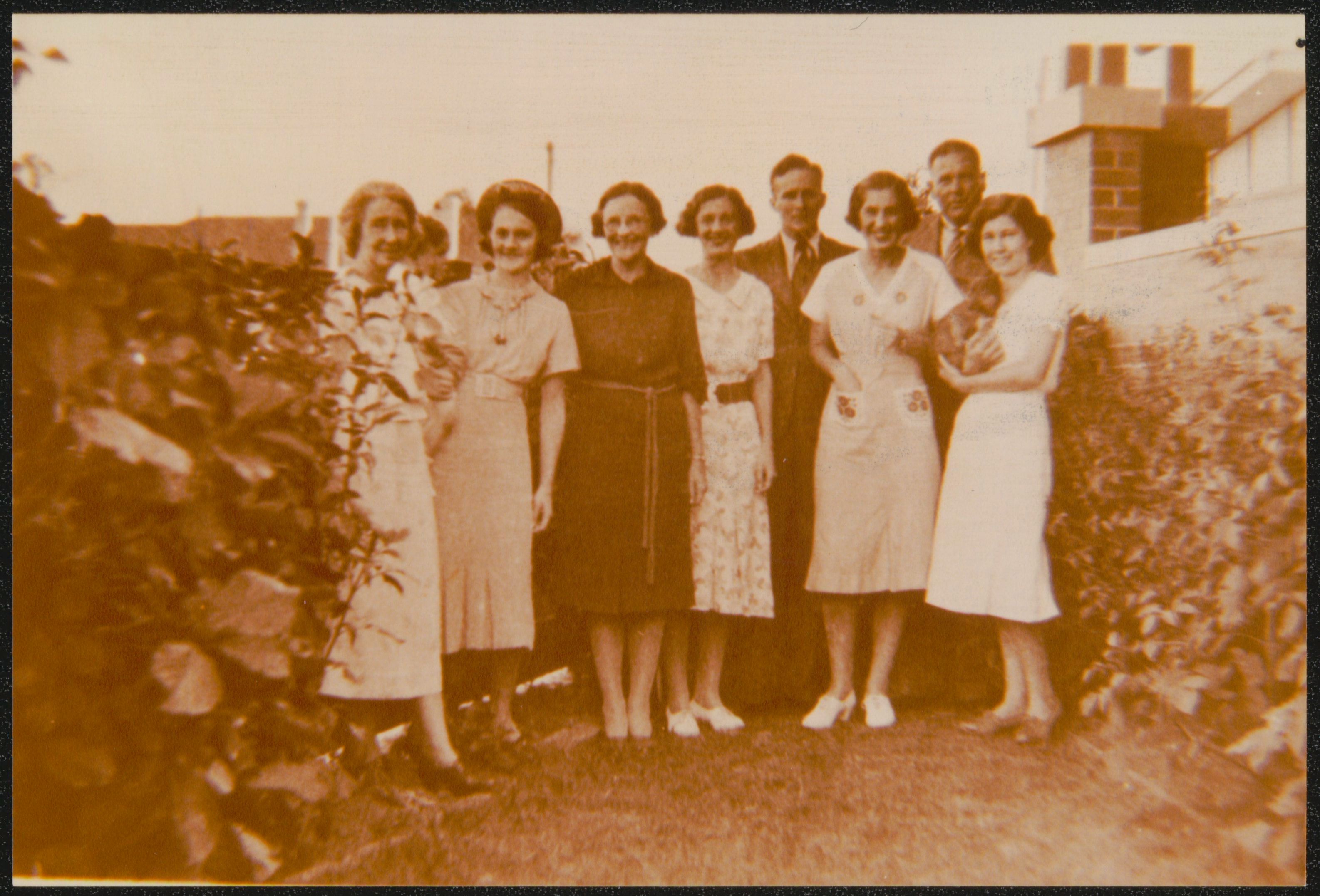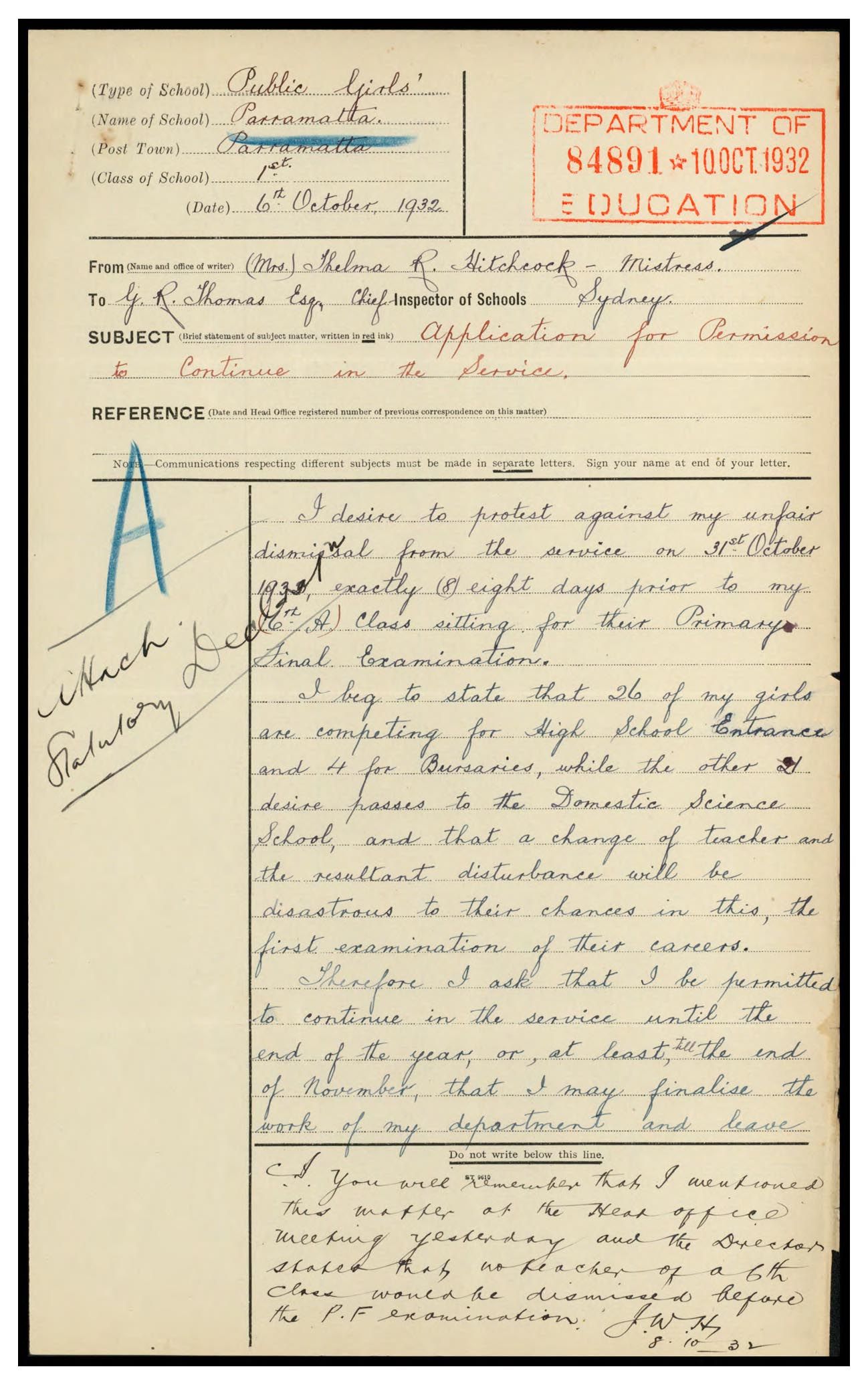Married women teachers' applications, 1932–35
In 1932, against the backdrop of the Depression, the NSW Government passed the Married Women (Lecturers and Teachers) Act. This Act restricted the employment of married women in the Department of Public Instruction, which meant that currently employed married women faced dismissal and any woman intending to marry had to resign upon doing so.
However, married women teachers could apply for an exemption by completing a statutory declaration every year explaining their circumstances. Most applied on the grounds of hardship, combined incomes being inadequate to support a family, supporting husbands unemployed due to illness or injury (especially after service during World War I), or supporting family members.
We hold copies of 693 declarations for exemption submitted by married women teachers for the years 1932–1935 as part of series NRS–12294 Special bundles [Public Service Board], which have all now been digitised and are available to view in our State Archives catalogue.
Example from the records
Browse allRelated resources

School teachers guide
Records that relate to teacher employment in the Government sector between 1788 and 1979

Teachers' rolls & career cards
These are the points of entry for research about teachers. The cards tell us where and when teachers were employed, and their classification
Women's stories
Browse all
Women police in NSW: a history of firsts
A collection of photographs at the Justice & Police Museum document the hard-won firsts, beginning in 1915, that led to women attaining equal status within the NSW Police Force

Meet the artist – Meroogal Women’s Art Prize 2024 winner Jackie Streit
'Vexations in blue' by Jackie Streit has been awarded first prize in the Meroogal Women’s Art Prize 2024

Tea and scandal
‘Come to afternoon “Tea and Scandal” tomorrow’ is the wonderfully enticing offer made via postcard by Viley and Olive, young friends of Vera Bell

Bicycle race
'Bicycle race' is just one of many postcards from the collection of Vera Bell as part of the Bell family papers, now housed in the Caroline Simpson Library
